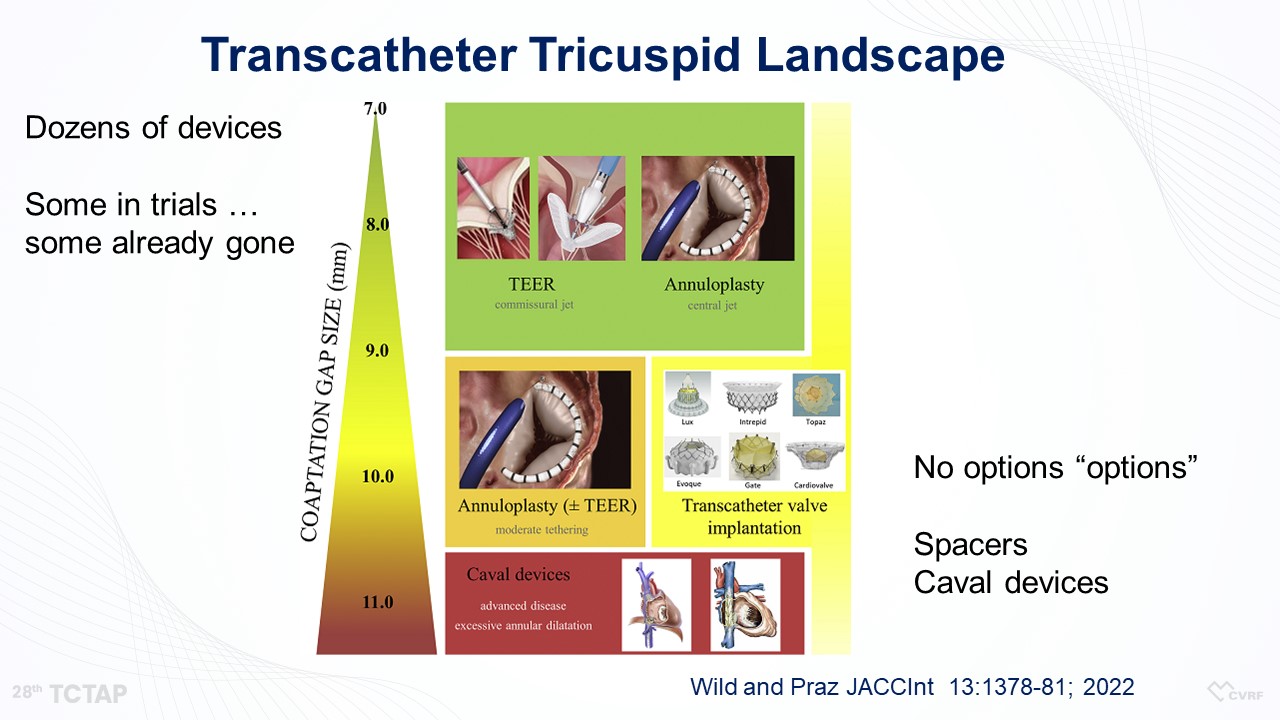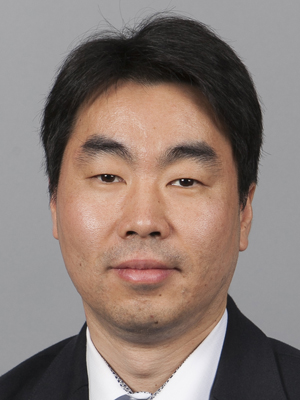
James Flaherty, MD
Northwestern University / Bluhm Cardiovascular Institute, Northwestern Medicine, USA
During the Hot Topics session on May 8th at TCTAP 2023, James Flaherty, MD (Northwestern University Feinberg School of Medicine, USA) shared the broad overview and updated catheter-based strategies for tricuspid valve regurgitation.
Functional tricuspid regurgitation (TR) is a progressive disease with a time interval of 5±3 years from mild to moderate/severe regurgitation. If left untreated, it can lead to the enlargement of the right atrium and ventricle, as well as the development of heart failure. One year survival rate with severe TR reaches up to 64%.
Historically, isolated tricuspid valve operations had rarely been performed due to high operative mortality (9%) and morbidity (42%) based on the STS database. To overcome the limitation of surgical treatment, several options of transcatheter-based approaches have been tested over the last decades (Figure 1).

First, transcatheter edge-to-edge repair (TEER) for TR
The TRILUMINATE was a pivotal trial evaluating the safety and effectiveness of a transcatheter tricuspid valve repair system, the TriClip device, for the treatment of moderate-to-severe TR. It showed an adequate reduction of less than moderate TR, correlated with symptomatic improvement compared to medical therapy alone (KCCQ +12.3% vs. +0.6% at 30 days after the procedure).
The PASTE trial tested the PASCAL transcatheter valve repair system showing similar results, TR reduction and symptomatic improvement.
Second, the transcatheter tricuspid valve replacement (TTVR) system (EVOQUE device)
The EVOQUE system is designed to replace the patient’s native tricuspid valve with a prosthetic valve that is inserted using a catheter. The TRISCEND trial and global registry showed a high implant success rate of 96.2%, the survival rate of 90.1%, and significant and sustained TR reduction with 97.6% of patients with mild or trace TR at 1 year.
Third, annuloplasty
The Edwards Cardioband Tricuspid Valve Reconstruction System Early Feasibility study enrolled 37 patients who had severe functional TR with NYHA class III/IV (65%). There was a progressive reduction of TR, from 44% of less than moderate TR at 30 days to 75% at 1 year.
Lastly, Flaherty pointed out several unanswered questions about transcatheter tricuspid valve therapies, including the appropriate timing for intervention, device durability, and anti-coagulation after TTVR.
Hot Topics
Mitral & Tricuspid Valve Therapy
Monday, May 8, 11:10 AM - 12:20 AM
Valve & Endovascular Theater, Vista 1, B2
Edited by

Jun-Hyok Oh, MD
Pusan National University Hospital, Korea (Republic of)

